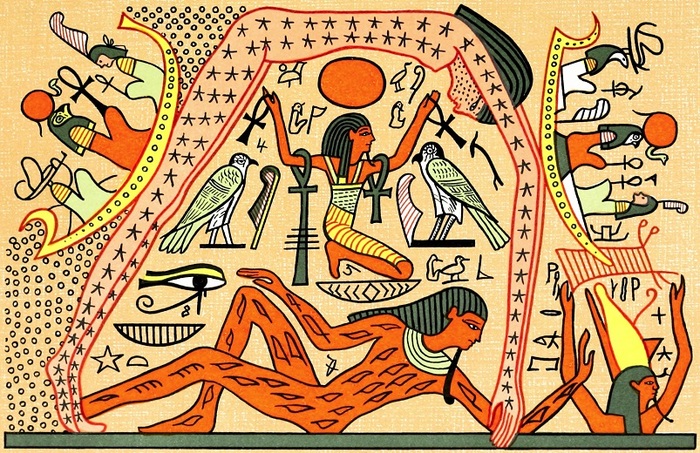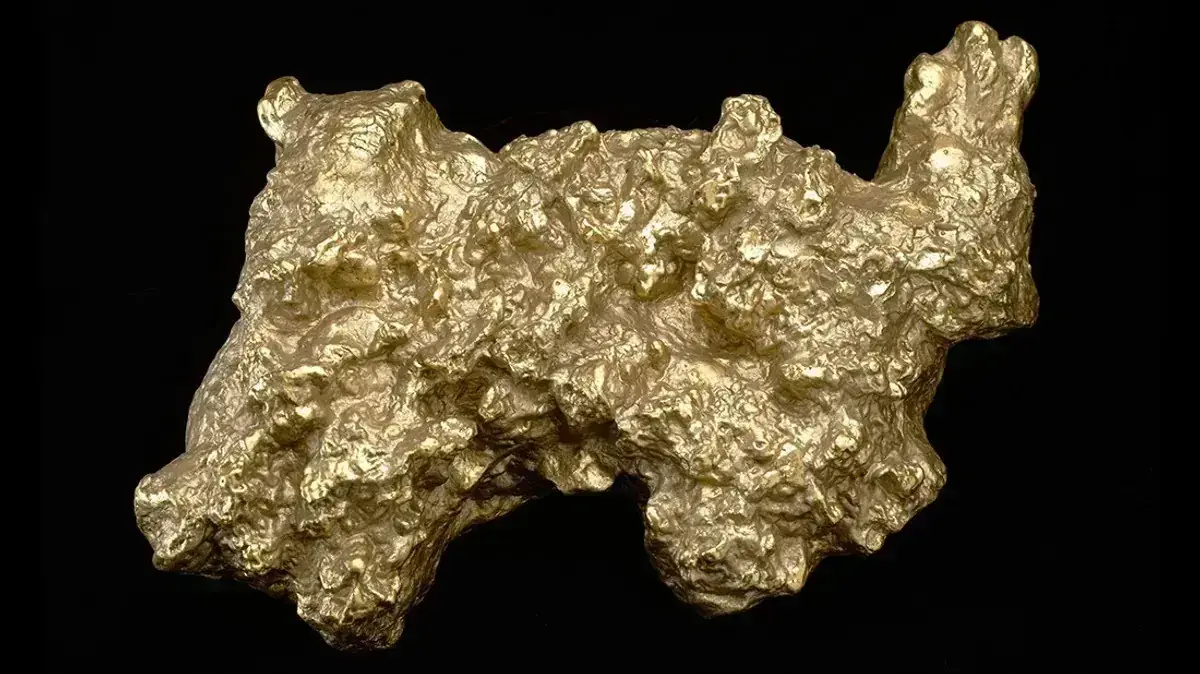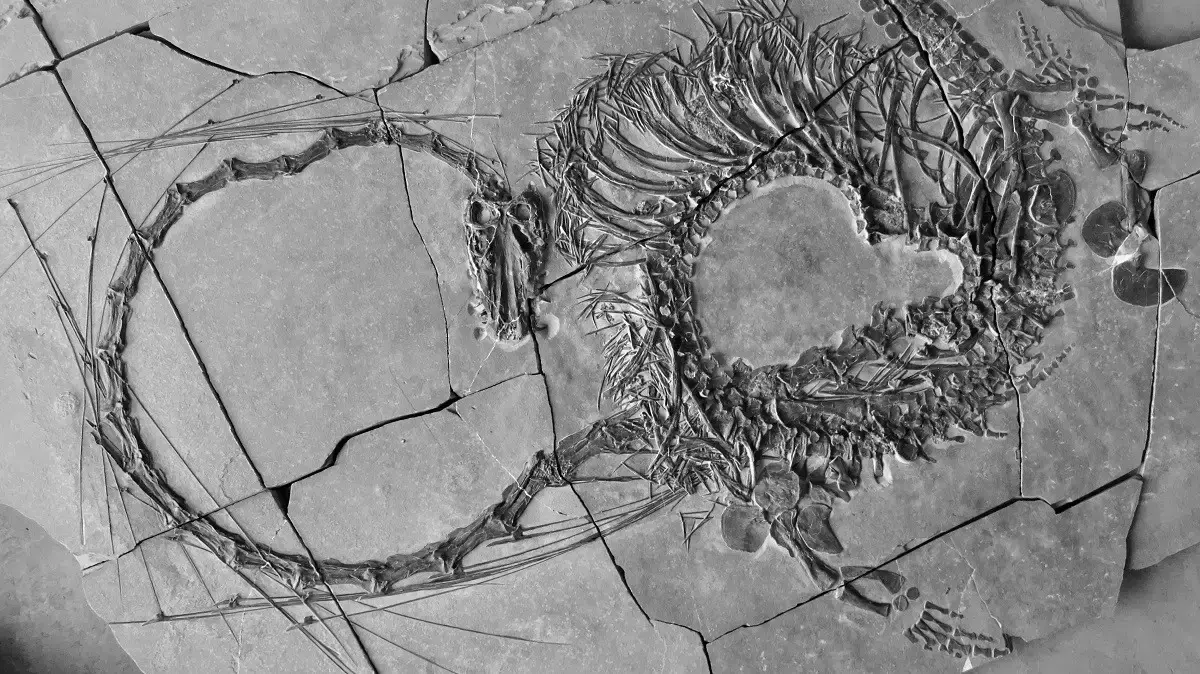Last Sunday, the Egyptian authorities announced the discovery of new "treasures" in the necropolis of Saqqarah.
Near the pyramid of King Teti, they unearthed the mortuary temple of one of his wives, Nearit, whose existence the world discovered on this occasion.
According to the adjacent rooms dedicated to offerings, this new queen would have been the object of a cult, what was thought until now reserved for kings.
“If it is confirmed, it would be unprecedented,” says French epigraphist Rémi Legros.
What if Nearit was involved in the palace intrigues that led to the ruler's alleged assassination?
The always shattering announcements of the Egyptian Ministry of Archeology, very dependent on sluggish tourist revenue, would quickly make one get lost in conjecture.
“The work continues,” insists Sahar Saleem, professor of radiology at the Faculty of Medicine at Cairo University in Egypt.
Since 2004, this radiologist has been examining mummies and antiques X-rays.
She works closely with Dr Zahi Hawass, who heads the Egyptian archaeological mission.
Why are these discoveries announced on Sunday so remarkable
?
SAHAR SALEEM
.
There are several reasons that make them truly unique.
The find is located in the Saqqara necropolis, a place that is home to several archaeological sites that span a very long period of Egyptian history, from the Old Kingdom to more recent periods.
The Saqqara necropolis has been a UNESCO World Heritage Site since the 1970s. The location of the archaeological mission led by Dr Hawass is unique.
It is close to an important pyramid, that of King Teti, the first ruler of the Sixth Dynasty who reigned in Egypt between 2323 and 2291 BC.
The research results are enormous.
More than 52 burial shafts, 10 to 12 meters deep, have been found.
They had not been looted or searched before.
This is an important point because it allows us, as experts, to learn more about funeral customs in ancient Egypt.
We see how and where exactly the ancient Egyptians placed their dead, the exact directions, how the objects relate to each other.
Everything is intact, as if it had just happened.
Egyptologists Sahar Saleem and Zahi Hawass.
DR
What new have you learned about the site of Saqqara and the New Kingdom
?
Morning essentials newsletter
A tour of the news to start the day
Subscribe to the newsletterAll newsletters
The excavations have revealed some very important archaeological finds that should literally rewrite history.
On the site, we discovered the mortuary temple of a queen who was so far unknown, Queen Nearit, wife of King Téti.
We knew Teti had two wives, but the story did not mention this woman who appeared to be his daughter as well.
A king of ancient Egypt was considered a god.
He could thus marry his sister or his daughter, an act which was forbidden to others.
That such a marriage existed as early as the Sixth Dynasty is a discovery.
During the New Kingdom, at the time of the 18th and 19th dynasties, King Teti was worshiped.
This site therefore became very important, a blessed place for the Egyptians of that time.
They wanted to be buried when they died around the pyramid of Teti.
One of the most important findings of the mission is that we have confirmed that entry to the Saqqara region during the New Kingdom was from this area.
We also found, alongside the funerary temple of Nearit, three adjoining rooms for offerings.
Can you tell us more about the sarcophagi and mummification workshops found there
?
The ancient Egyptians wanted to preserve their body after death for the life beyond.
That is why they acquired mastery of the mummification process and made it sacred.
In order to protect the mummified body, they placed it in a coffin or sometimes in nested coffins, one inside the other like Russian dolls, this to ensure the protection of the mummy.
Coffins can be gold like Tutankhamun's, expensive wood like cedar imported from Syria, or cheap wood, stones or even pottery for the poorest.
Sacred inscriptions from the “Book of the Dead” as well as drawings of symbols and gods on the coffins guaranteed a safe journey for the deceased to the afterlife.
At our excavation site, the mission discovered a cache for the coffins.
About 50 coffins were found, stacked on top of each other, inside a 10m deep burial shaft.
These coffins are made of wood and are anthropoid, that is, they have the outer shape of a human.
In a funeral well, in Saqqarah.
DR
How did you, yourself, take part in these discoveries
?
I am an international expert in paleo-radiology.
This consists of the use of medical imaging techniques for non-invasive investigations on objects from ancient cultures.
I worked on several projects in Egypt, including scanning royal mummies of the New Kingdom with Dr Zahi Hawass.
On the site, I do the paleo-radiology field work.
It is the x-ray of mummies and objects
in situ,
on the site where they were found.
So I use a portable digital x-ray machine and designed detachable and lightweight x-ray props to lower them down the well to x-ray the coffins inside.
This provides valuable information about the contents of the coffin without the need to transport them outside the well, - a process which can harm vulnerable mummies - without needing to unpack the mummy or even open the coffin.
All the coffins x-rayed so far contained well-preserved mummies.
What information do x-rays give you
?
X-rays cannot pass through solid objects such as bones or metals, but can pass through softer materials such as wood, soft tissue.
The x-ray can therefore differentiate the structures inside the coffin and the body parts of the mummy.
They can provide information on age, sex, disease, methods of mummification, as well as the amulets and jewelry that are inside.
What are the causes of death that you identified in these new mummies
?
X-rays can detect bone damage, trauma, infections, degeneration, tumors… Some can be the cause of death.
We have found some interesting results, but we are only at the announcement of the discovery.
Sahar Saleem near the infant sarcophagus, in Saqqara.
DR
There was in particular the mummy of a young child
...
A small sarcophagus was placed inside a niche in the wall of the burial shaft, near the entrance.
Made of wood, it was only moderately decorated.
X-rays showed a mummy with a small baby.
We were able to judge by the appearance of the bones of the skull and the long bones: they were not united, as is the case in newborns.
It should be noted that the ancient Egyptians very well recognized the right of children, including fetuses, to be mummified in order to have an afterlife.
They made sure to bury their dead children with the rest of the family.
The work continues and we will publish the results of our scientific research in the future.
VIDEO.
Egypt
: the discovery of 3000-year-old sarcophagi will "
rewrite history
"





/cloudfront-eu-central-1.images.arcpublishing.com/prisa/CHRJ6ZFMEFCBDNPUSUSFWRPRFE.png)









